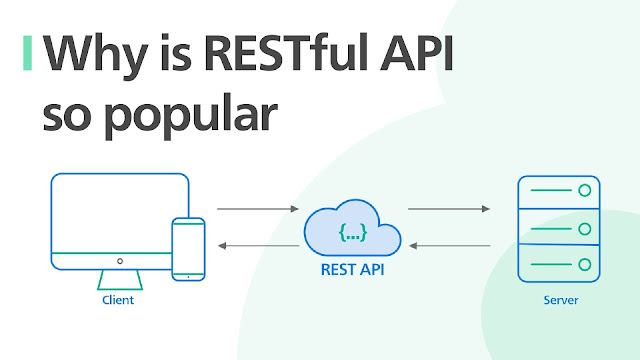REST API: Revolutionizing Web Development
In the realm of modern web development, APIs (Application Programming Interfaces) play a crucial role in enabling communication between different software systems.
Among various API architectures, REST (Representational State Transfer) has emerged as the de facto standard due to its simplicity, scalability, and widespread adoption. This article delves into the world of REST APIs, exploring their definition, benefits, implementation, and their impact on web development.
What is a REST API?
REST API is an architectural style that defines a set of constraints for designing networked applications. It allows different software systems to communicate and interact with each other over the internet using standard HTTP protocols. REST APIs are based on the principles of resource-based architecture, where each resource is identified by a unique URL (Uniform Resource Locator).
Benefits of REST API
REST APIs offer numerous advantages, making them an ideal choice for web development:
- Simplicity and Ease of Use: REST APIs are designed to be simple and intuitive, using well-defined HTTP methods like GET, POST, PUT, and DELETE for different operations.
- Scalability: REST APIs are highly scalable due to their stateless nature. Each request from a client to the server contains all the necessary information, making it easier to distribute and scale the system horizontally.
- Flexibility: REST APIs support a wide range of data formats, including JSON (JavaScript Object Notation), XML (eXtensible Markup Language), and more. This flexibility enables easy integration with various programming languages and platforms.
Caching: REST APIs utilize HTTP caching mechanisms, allowing clients to cache responses and reduce server load. This improves performance and responsiveness, especially in scenarios where data doesn't frequently change.
Implementing a REST API
To understand the implementation of a REST API, let's consider a simple example of a Todo List application.
Step 1: Defining Resources and Endpoints
First, we need to define the resources that our API will expose. In this case, the primary resource is a Todo item, which may have properties like "id," "title," and "completed."
Next, we define the endpoints that correspond to different operations on the Todo resource. For example:
- GET /todos: Retrieve all Todo items
- GET /todos/{id}: Retrieve a specific Todo item by its ID
- POST /todos: Create a new Todo item
- PUT /todos/{id}: Update an existing Todo item
- DELETE /todos/{id}: Delete a Todo item
Step 2: Handling Requests and Responses
Once we have defined the resources and endpoints, we need to implement the server-side logic to handle incoming requests and generate appropriate responses.
For example, when a client sends a GET request to /todos, the server retrieves all the Todo items from a database and responds with a JSON array containing the items.
Similarly, when a client sends a POST request to /todos with a JSON payload representing a new Todo item, the server creates a new entry in the database and responds with the created Todo item, including the assigned ID.
Step 3: Implementing CRUD Operations
To handle the different operations on the Todo resource, we need to implement the Create, Read, Update, and Delete (CRUD) functionalities.
- Create: When a client sends a POST request to /todos, the server creates a new Todo item by storing it in the database.
- Read: When a client sends a GET request to /todos/{id}, the server retrieves the Todo item with the corresponding ID from the database and returns it as the response.
- Update: When a client sends a PUT request to /todos/{id}, the server updates the Todo item with the provided ID based on the information in the request payload.
- Delete: When a client sends a DELETE request to /todos/{id}, the server deletes the Todo item with the specified ID from the database.
Conclusion
REST APIs have revolutionized web development by providing a standardized and scalable approach to building web services. Their simplicity, flexibility, and compatibility with various platforms make them an essential component of modern software systems. By following the principles and best practices of REST architecture, developers can design and implement robust APIs that enable seamless integration and communication between different software applications.
As web development continues to evolve, REST APIs will remain a fundamental building block, empowering developers to create innovative and interconnected systems that drive the digital landscape forward. Understanding the concepts and implementation of REST APIs is crucial for any developer aspiring to excel in today's web development industry.


Posting Komentar untuk "REST API: Revolutionizing Web Development"
Posting Komentar
Silahkan komentar dengan bijak jika ada yang ingin ditanyakan.